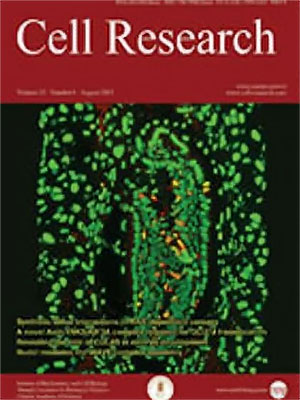
Volume 13, No 6, Dec 2003
ISSN: 1001-0602
EISSN: 1748-7838 2018
impact factor 17.848*
(Clarivate Analytics, 2019)
Volume 13 Issue 6, December 2003: 459-464
ORIGINAL ARTICLES
Distinct expression profiles of transcriptional coactivators for thyroid hormone receptors during Xenopus laevis metamorphosis
indu D PAUL, Yun-Bo SHI*
Laboratory of Gene Regulation and Development, National Institute of Child Health and Human Development, National Institutes of Health, Bldg. USA.
Correspondence: Yun-Bo SHI(shi@helix.nih.gov )
The biological effects of thyroid hormone (T
3) are mediated by the thyroid hormone receptor (TR). Amphibian metamorphosis is one of the most dramatic processes that are dependent on T
3. T
3 regulates a series of orchestrated developmental changes, which ultimately result in the conversion of an aquatic herbivorous tadpole to a terrestrial carnivorous frog. T
3 is presumed to bind to TRs, which in turn recruit coactivators, leading to gene activation. The best-studied coactivators belong to the p160 or SRC family. Members of this family include SRC1/NCoA-1, SRC2/TIF2/GRIP1, and SRC3/pCIP/ACTR/AIB-1/RAC-3/TRAM-1. These SRCs interact directly with liganded TR and function as adapter molecules to recruit other coactivators such as p300/CBP. Here, we studied the expression patterns of these coactivators during various stages of development. Amongst the coactivators cloned in
Xenopus laevis, SRC3 was found to be dramatically upregulated during natural and T
3-induced metamorphosis, and SRC2 and p300 are expressed throughout postembryonic development with little change in their expression levels. These results support the view that these coactivators participate in gene regulation by TR during metamorphosis.
FULL TEXT | PDF
Browse 1899


